For some time I’ve had a github-readme-stats stats card in my Github readme profile, and wanted it to include all of my private contributions.
Example:
Containerising the server
Out-of-the box it’s geared towards being hosted on Vercel, etc., but they document running the server by other methods.
# using alpine doesn't include git
FROM node:18 AS builder
WORKDIR /usr/src
RUN git clone https://github.com/anuraghazra/github-readme-stats.git app
WORKDIR /usr/src/app
# Checkout to specific version
RUN git checkout 30db7790d65053750c0b47e80100f8ddecdbd551
# Install express
RUN npm i --save --package-lock-only express
# Run `ci` install with express included in package file
RUN NODE_ENV=production npm ci --ignore-scripts
FROM node:18-alpine
RUN apk add --no-cache tini
WORKDIR /usr/src/app
COPY --from=builder /usr/src/app ./
EXPOSE 9000
LABEL org.opencontainers.image.source=https://github.com/alistaircol/grs
LABEL org.opencontainers.image.description="Github Readme Stats"
LABEL org.opencontainers.image.licenses=MIT
# Use tini as the entrypoint to handle signals correctly
ENTRYPOINT ["/sbin/tini", "node", "express.js"]
Create a PAT for pushing/pulling this image, and authenticate.
Using this taskfile to build, tag and push the image.
---
version: 3
dotenv:
- .env
vars:
TAG_DATE:
sh:
date +"%Y-%m-%d-%H%M%S"
IMAGE_NAME: github-readme-stats
REGISTRY_LOCAL: ac93.uk
REGISTRY_REMOTE: ghcr.io
REGISTRY_REMOTE_USER: alistaircol
tasks:
docker:login:
silent: true
cmds:
- echo "$CR_PAT" | docker login ghcr.io -u {{.REGISTRY_REMOTE_USER}} --password-stdin
docker:image:build:
cmds:
- >-
docker
buildx
build
--platform linux/amd64,linux/arm64
--tag {{.REGISTRY_LOCAL}}/{{.IMAGE_NAME}}:{{.TAG_DATE}}
--tag {{.REGISTRY_LOCAL}}/{{.IMAGE_NAME}}:latest
--tag {{.REGISTRY_REMOTE}}/{{.REGISTRY_REMOTE_USER}}/{{.IMAGE_NAME}}:{{.TAG_DATE}}
--tag {{.REGISTRY_REMOTE}}/{{.REGISTRY_REMOTE_USER}}/{{.IMAGE_NAME}}:latest
.
docker:image:push:
cmds:
- >-
docker
push
--all-tags
{{.REGISTRY_REMOTE}}/{{.REGISTRY_REMOTE_USER}}/{{.IMAGE_NAME}}
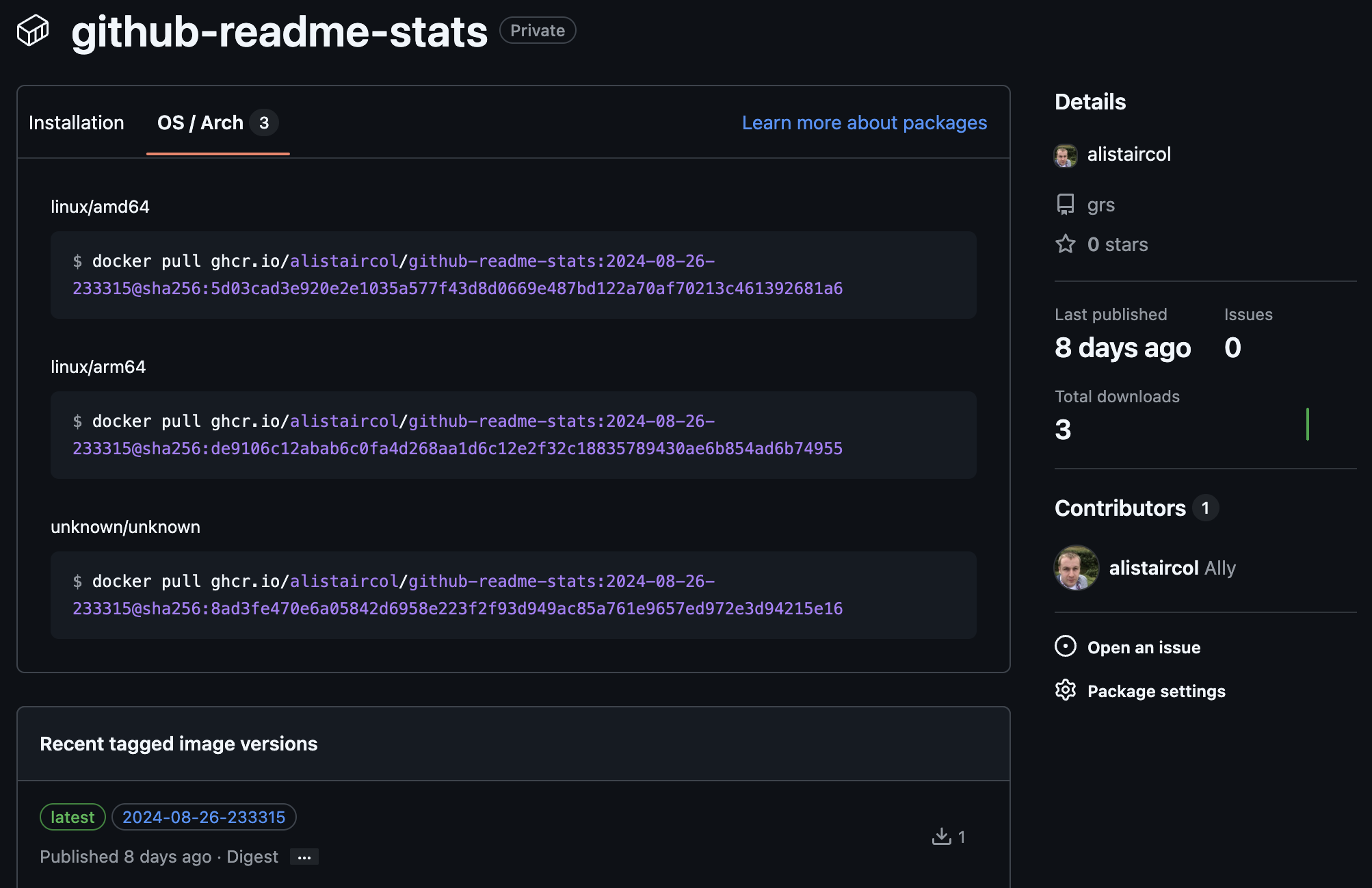
Running the server
Create a .env file containing the second PAT for fetching private contributions.
PAT_1=ghp_blah
It can be run locally:
docker run \
--rm \
-it \
--env-file=$(pwd)/.env \
-p '9000:9000' \
ac93.uk/github-readme-stats
Using the remote image:
docker run \
--rm \
-it \
--env-file=$(pwd)/.env \
-p '9000:9000' \
ghcr.io/alistaircol/github-readme-stats

Appliance
I will be running this GRS server image on an Ubuntu server VM under Proxmox.
It will obviously need docker and to be aware of the container registry PAT.
This VM will be the target of the playbook so will need some AWS dependencies. A truncated setup role could look like this:
---
- name: Install required system packages
become: true
block:
- name: Update apt caches
ansible.builtin.apt:
update_cache: true
- name: Install required system packages
ansible.builtin.package:
name:
- python3
- python3-pip
state: present
- name: Install aws dependencies for ansible playbooks
ansible.builtin.pip:
name:
- botocore
- boto3
Playbook
The playbook will look relatively simple to:
- Create a temporary directory
- Download image from local private GRS server to temporary directory
- Upload image in temporary directory to S3
---
- name: Create a private Github readme stats and upload them
hosts:
- grs
gather_facts: false
tasks:
- name: Create a temporary directory
ansible.builtin.tempfile:
state: directory
suffix: grs
register: tmpdir
- name: Download Github readme stats image
ansible.builtin.get_url:
url: http://192.168.1.97:9000/?username=alistaircol&count_private=true&show_icons=true&custom_title=Ally+on+GitHub&disable_animations=true&title_color=58a6ff&icon_color=ffffff&text_color=ffffff&bg_color=0D1117&border_color=30363D&hide=issues,contribs,stars&show=prs_merged,reviews
dest: "{{ tmpdir.path }}/github-readme-stats.svg"
register: downloaded_image
- name: Upload the image to S3
amazon.aws.aws_s3:
access_key: "{{ lookup('ansible.builtin.vars', 'AWS_ACCESS_KEY_ID') }}"
secret_key: "{{ lookup('ansible.builtin.vars', 'AWS_ACCESS_KEY') }}"
region: "{{ lookup('ansible.builtin.vars', 'AWS_REGION') }}"
bucket: static.ac93.uk
object: github-readme-stats.svg
src: "{{ downloaded_image.dest }}"
mode: put
Semaphore
Create a project in semaphore then follow these instructions.
Key Store
Create a new key entry so that the workers can connect to the target.
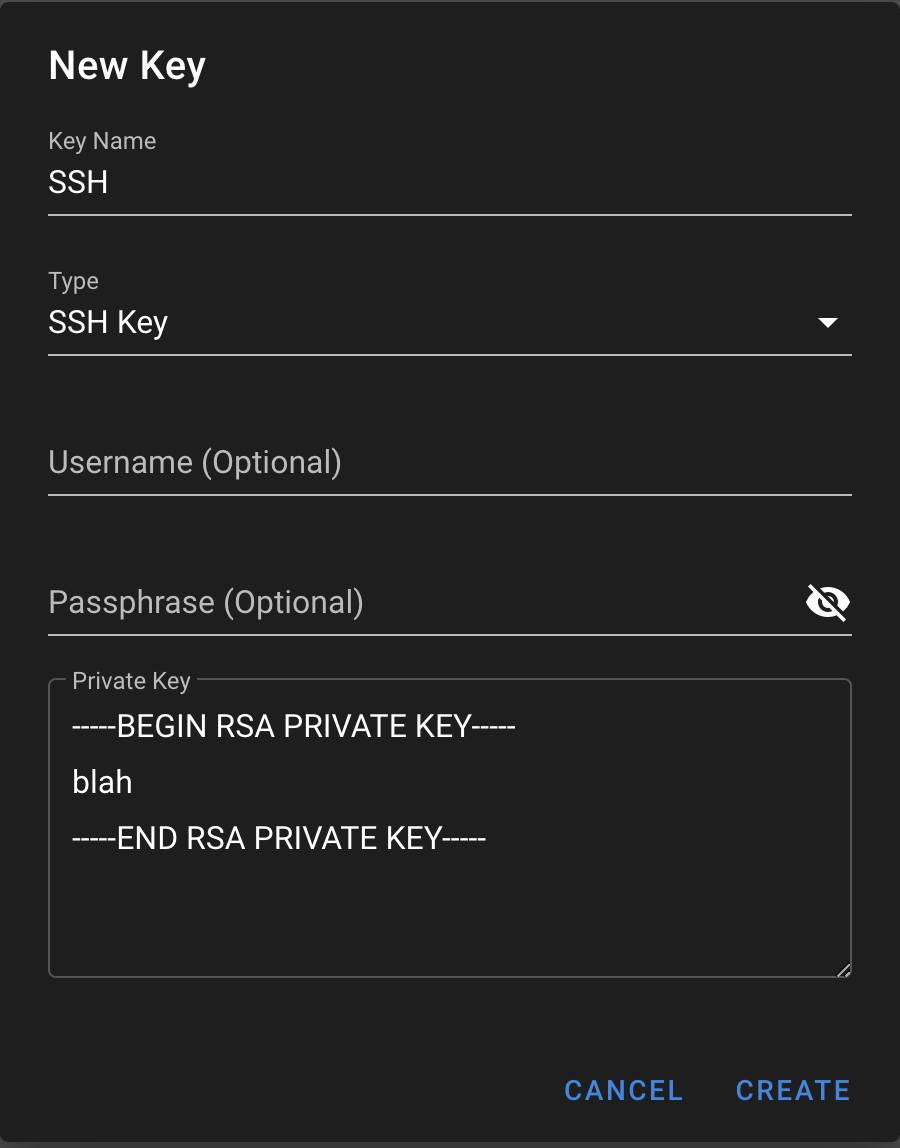
Inventory
Create a new static-yaml inventory.
---
all:
vars:
ansible_host_key_checking: false
hosts:
grs:
ansible_host: 192.168.1.97
ansible_user: ally
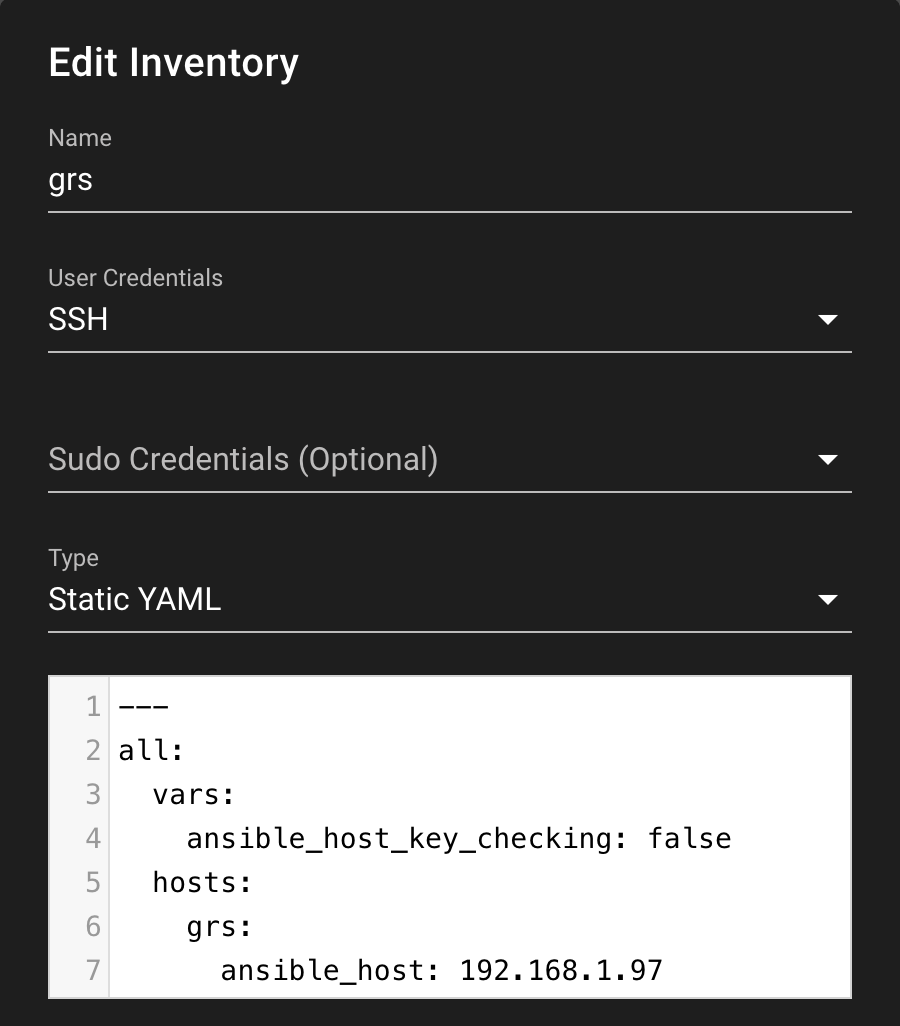
Repository
Add the git repository where the playbook lives. You might need to create a new key in the store.
Environment
Create a new environment, we will add our AWS credentials here so the playbook can read them and pass to the target.
Add the AWS credentials to the Extra variables section.
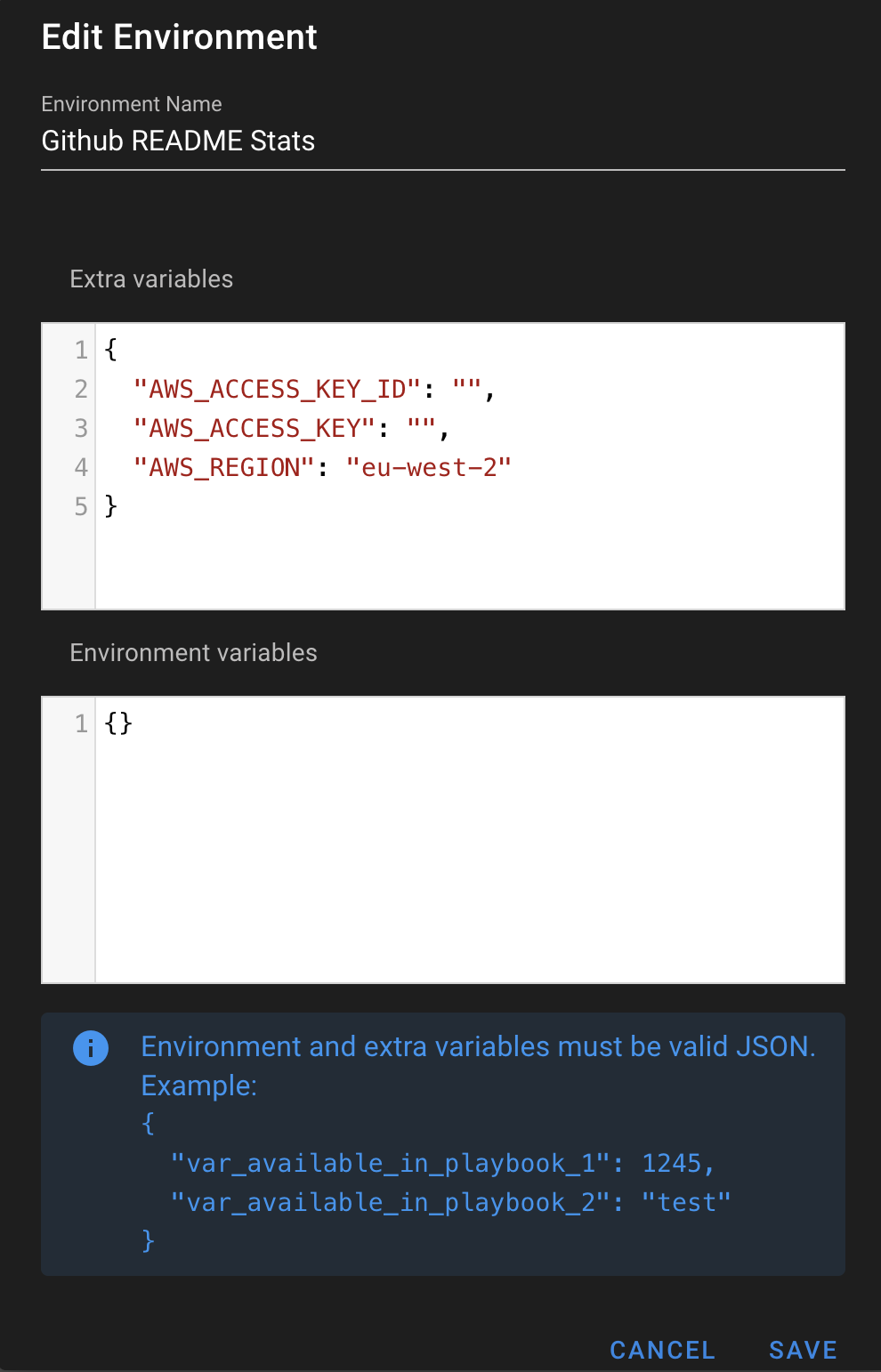
Task Template
Create a new task template.
- Set the repository to the one created earlier
- Set the playbook file as a relative path to it within the repo
- Set the inventory to the
static-yamlone created earlier - Set the environment to the one created earlier containing the AWS credentials in
Extra variables - Set the cron to
0 0 * * *to run every day at midnight
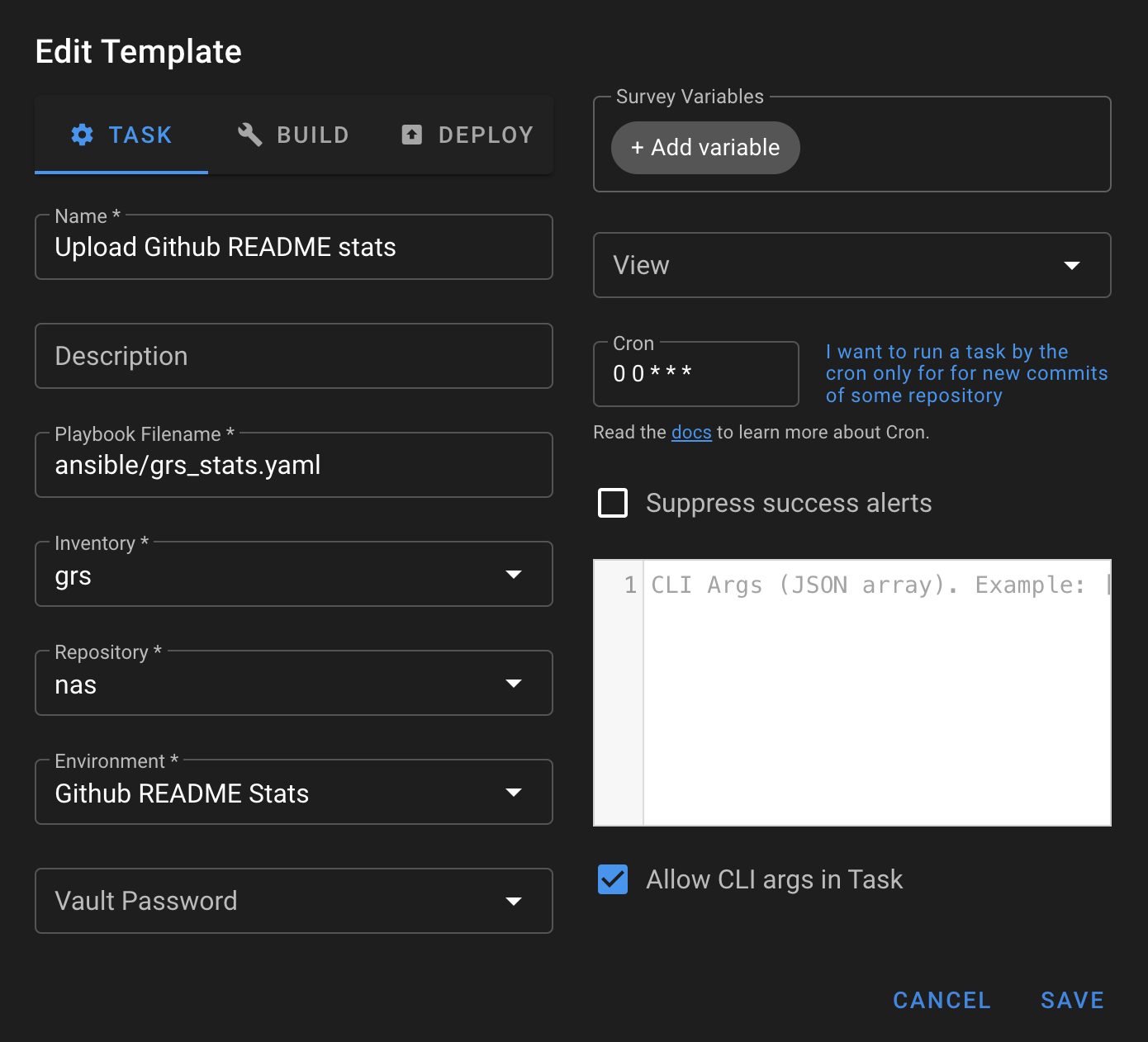
You can see the run history:

You can interrogate previous runs:

